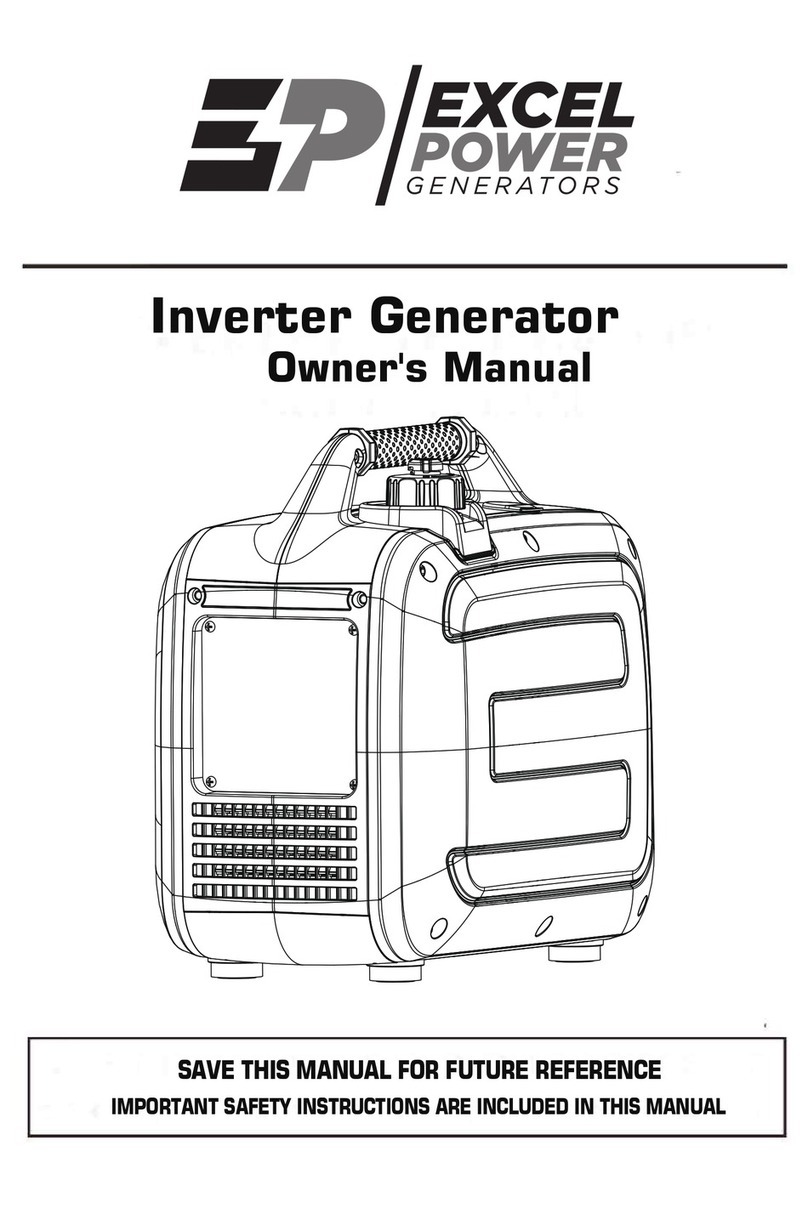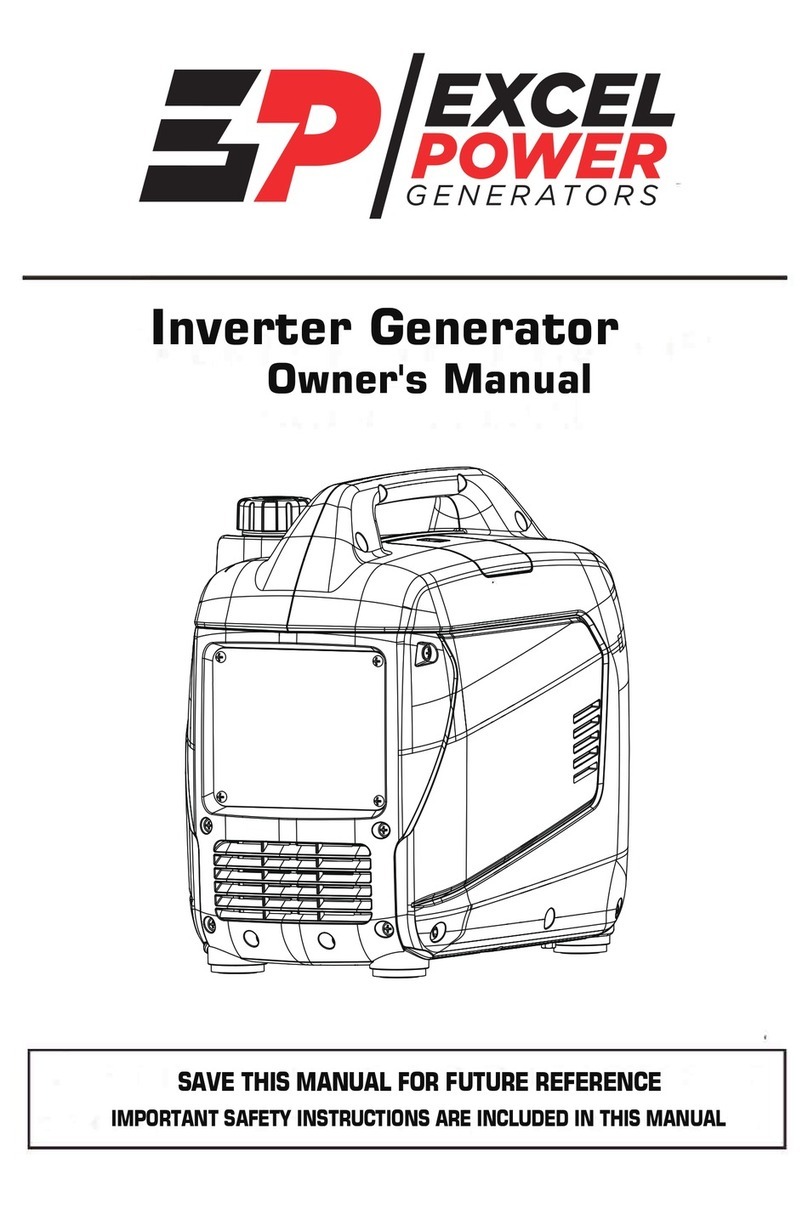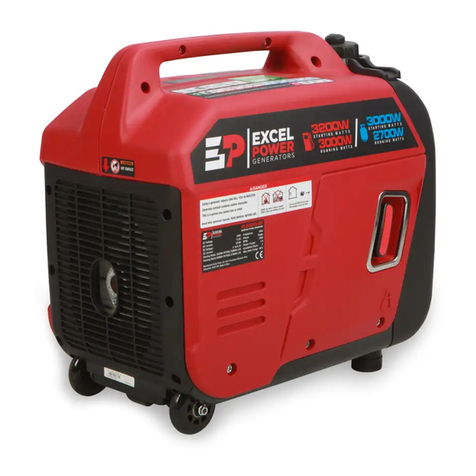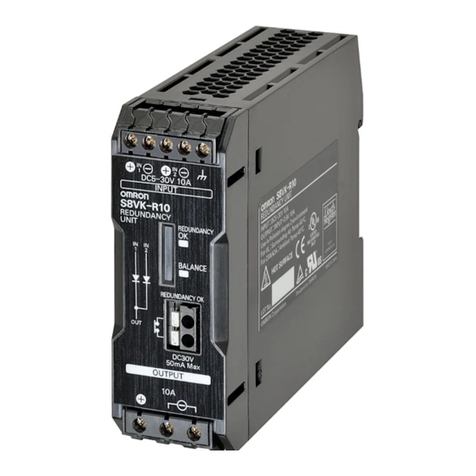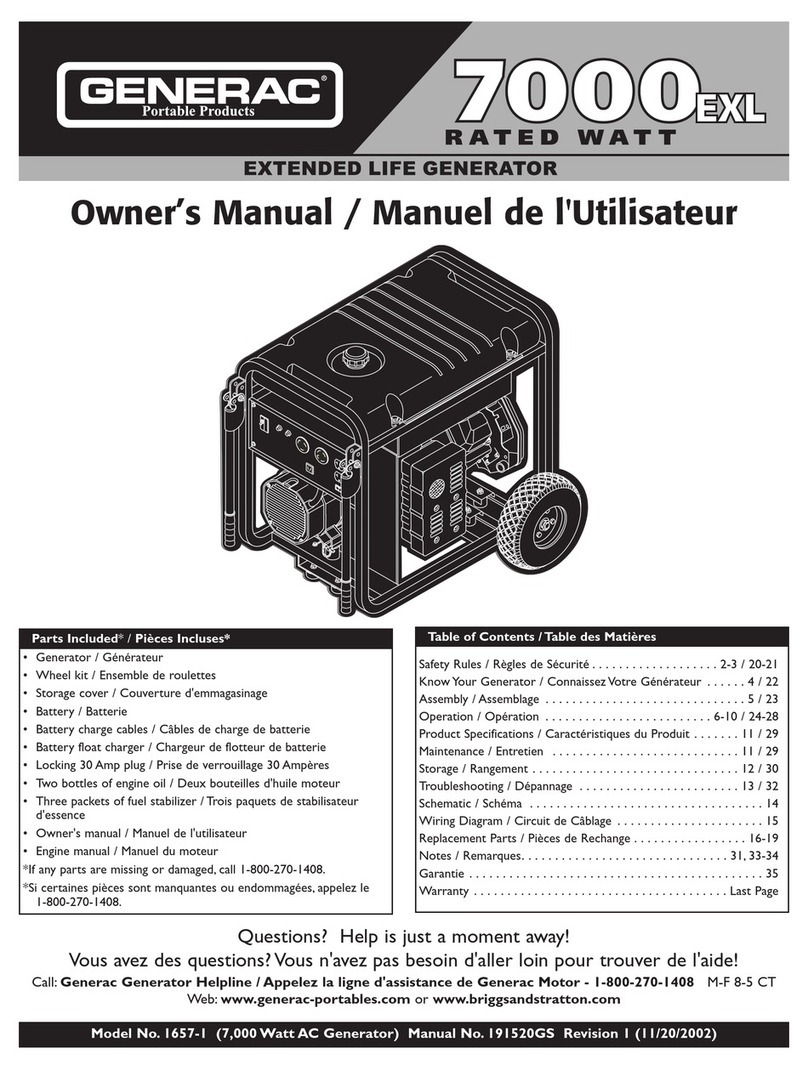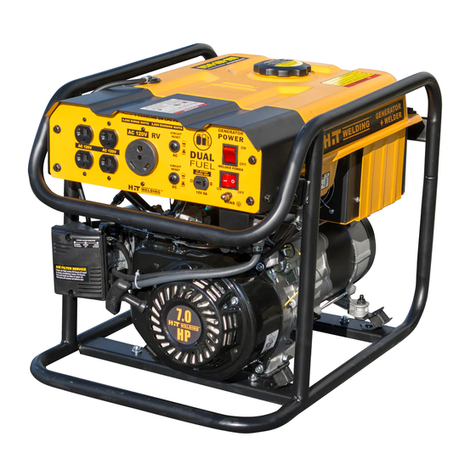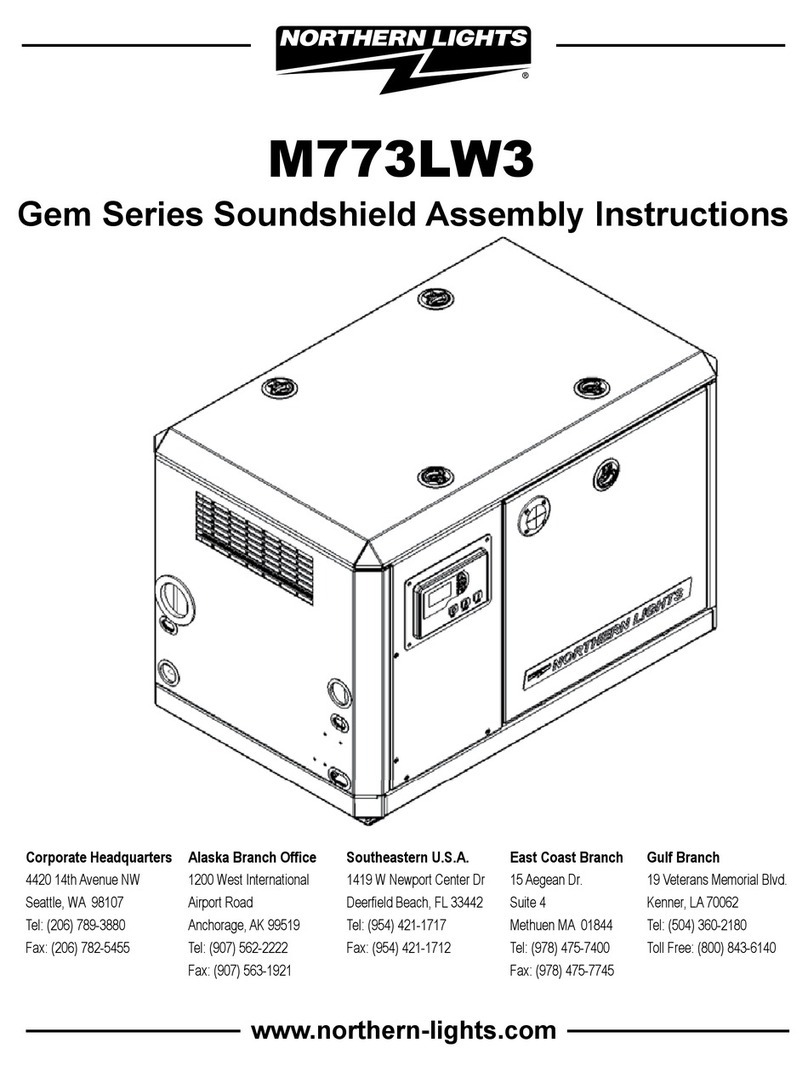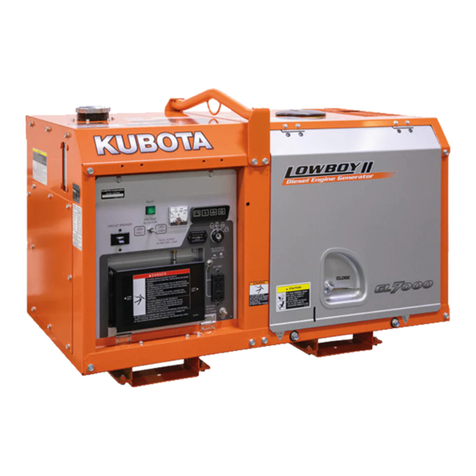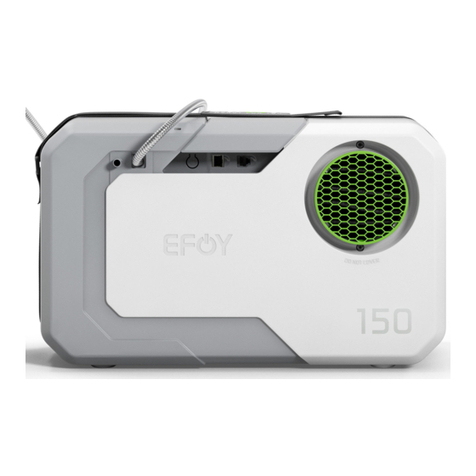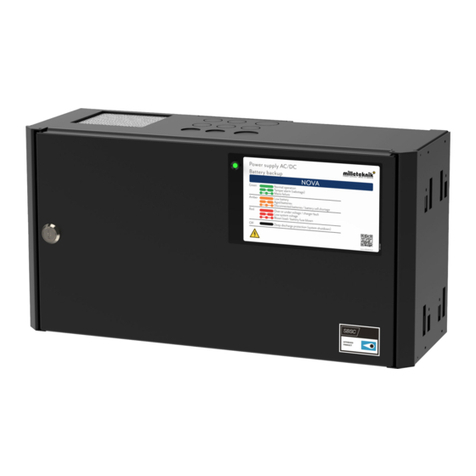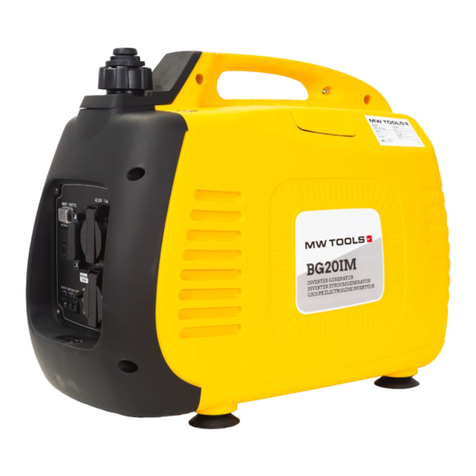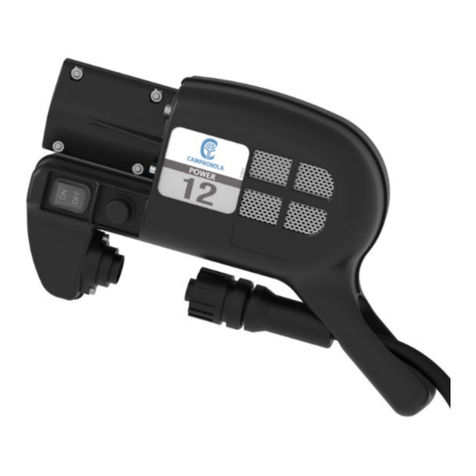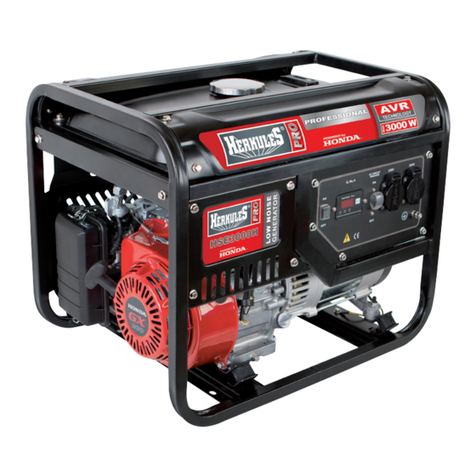Excel Power XL8000ii User manual

INVERTER GENERATOR
OWNER'S MANUAL & OPERATION INSTRUCTION
SAVE THIS MANUAL: This manual contains important information regarding safety,operation, maintenance and storage
of this product. Before use, read carefully and understand all cautions, warnings, instructions and product labels.
Failure to do so could result in serious personal injury and/or property damage.

Congratulations on your selection of this generator. We are certain you will be
pleased with your purchase of one of the finest generators on the market.
We want to help you get the best results from your new generator and to operate it
safely. This manual contains the information on how to do that, please read it
carefully.
When your generator needs scheduled maintenance, keep in mind that your
servicing dealer is specially trained in servicing generators and is supported by the
parts and service divisions. Your servicing dealer is dedicated to your satisfaction
and will be pleased to answer your questions and concerns.
Model:
Starting Watts:
Running Watts:
Ac Voltage:
Frequency:
Phase:
Fuel Capacity:
Engine:
Engine Oil:
XL8000ii
7500W
7000W
230V
50Hz
Single
26L
SC460(459cc)
1.0L

Your safety and the safety of others are very important. And using this generator
safely is an important responsibility.
To help you make informed decisions about safety, we have provided operating
procedures and other information on labels and in this manual. This information
alerts you to potential hazards that could hurt you or others.
Of course, it is not practical or possible to warn you about all the hazards associated
with operating or maintaining a generator. You must use your own good judgment.
A FEW WORDS ABOUT SAFETY
Record the model and serial numbers as well as date and place of purchase for
future reference. Have this information available when ordering parts and when
making technical or warranty inquiries.
Model Number
Serial Number
Date of Purchase
INTRODUCTION
3

IMPORTANT SAFETY INSTRUCTIONS ............................................5
SYMBOLS ...........................................................................................8
ELECTRICAL ......................................................................................9
FEATURES ........................................................................................11
ASSEMBLY ........................................................................................14
OPERATION ......................................................................................15
MAINTENANCE .................................................................................22
TROUBLESHOOTING .......................................................................28
PARTS ASSEMBLY ...........................................................................29
PARTS LIST .......................................................................................30
CONTENTS
4

IMPORTANT SAFETY INSTRUCTIONS
5
DANGER:
Carbon Monoxide. Using a generator
indoors CAN KILL YOU IN MINUTES.
Generator exhaust contains high levels
of carbon monoxide (CO), a poisonous
gas you cannot see or smell. If you can
smell the generator exhaust, you are
breathing CO. But even if you cannot
smell the exhaust, you could be
breathing CO.
Never use a generator inside
homes, garages, crawlspaces, or
other partly enclosed areas. Deadly
levels of carbon monoxide can
build up in these areas. Using a fan
or opening windows and doors
does NOT supply enough fresh air.
Do not connect to a building’s
electrical system unless the
generator and transfer switch have
been properly installed and the
electrical output has been verified by
a qualified electrician. The
connection must isolate the
generator power from utility power
and must comply with all applicable
laws and electrical codes.
Do not allow children or untrained
individuals to use this unit.
Do not start or operate the engine in
a confined space, building, near
open windows, or in other
unventilated space where dangerous
carbon monoxide fumes can collect.
Carbon monoxide, a colorless,
odorless, and extremely dangerous
gas, can cause unconsciousness or
death.
Keep all bystanders, children, and
pets at least 10 feet away.
ONLY use a generator outdoors
and far away from open windows,
doors, and vents. These openings
can pull in generator exhaust.
Even when you use a generator
correctly, CO may leak into the home.
ALWAYS use a battery-powered or
battery-backup CO alarm in the home.
If you start to feel sick, dizzy, or weak
after the generator has been running,
move to fresh air RIGHT AWAY. See a
doctor. You could have carbon
monoxide poisoning.
WARNING:
Read and understand all instructions.
Failure to follow all instructions listed
below could result in electrocution, fire,
and/or carbon monoxide poisoning,
which can cause death or serious injury.
WARNING:
National Electric Code requires
generator to be grounded to an
approved earth ground. Before using
the ground terminal, consult a qualified
electrician, electrical inspector, or local
agency having jurisdiction for local
codes or ordinances that apply to the
intended use of the generator.
SAVE THESE INSTRUCTIONS
This manual contains important
instructions for this product that should
be followed during installation and
maintenance of the generator.

IMPORTANT SAFETY INSTRUCTIONS
6
Wear sturdy and dry shoes or boots.
Do not operate while barefoot.
Do not operate generator when you
are tired or under the influence of
drugs, alcohol, or medication.
Keep all parts of your body away
from any moving parts and all hot
surfaces of the unit.
Do not touch bare wire or
receptacles.
Do not use generator with electrical
cords which are worn, frayed, bare,
or otherwise damaged.
Before storing, allow the engine to
cool and drain fuel from the unit.
Do not operate or store the generator
in rain, snow, or wet weather.
Store the generator in a well-
ventilated area with the fuel tank
empty. Fuel should not be stored
near the generator.
Empty fuel tank, turn the engine/
choke lever to the off position and
restrain the unit from moving before
transporting in a vehicle.
Allow engine to cool for five minutes
before refueling.
To reduce the risk of fire and burn
injury, handle fuel with care. It is
highly flammable.
Do not smoke while handling fuel.
Store fuel in a container approved
for gasoline.
Position the unit on level ground,
stop engine, and allow to cool before
refueling.
Loosen fuel cap slowly to release
pressure and to keep fuel from
escaping around the cap.
Tighten the fuel cap securely after
refueling.
Wipe spilled fuel from the unit.
Never attempt to burn off spilled fuel
under any circumstances.
Generators vibrate in normal use.
During and after the use of the
generator, inspect the generator as
well as extension cords and power
supply cords connected to it for
damage resulting from vibration.
Have damaged items repaired or
replaced as necessary. Do not use
plugs or cords that show signs of
damage such as broken or cracked
insulation or damaged blades.
For power outages, permanently
installed stationary generators are
better suited for providing back-up
power to the home. Even a properly
connected portable generator can
become overloaded. This may result
in overheating or stressing the
generator components, possibly
leading to generator failure.
Use only authorized replacement
parts and accessories and follow
instructions in the Maintenance
section of this manual. Use of
unauthorized parts or failure to follow
maintenance instructions may create
a risk of shock or injury.
Inspect the unit before each use for
loose fasteners, fuel leaks, etc.
Replace damaged parts.
Maintain the unit per maintenance
instructions in this Operator’s Manual.

IMPORTANT SAFETY INSTRUCTIONS
7
Operate outdoors in a well-ventilated,
well-lit area isolated from working
areas to avoid noise interference.
Operate outdoors in a well-ventilated,
well-lit area isolated from working
areas to avoid noise interference.
Operating the generator in wet
conditions could result in
electrocution. Keep the unit dry.
Keep the generator a minimum of 3
feet away from all types of
combustible material.
Do not operate generator near
hazardous material.
Do not operate generator at a gas or
natural gas filling station.
Do not touch the muffler or cylinder
during or immediately after use; they
are HOT and will cause burn injury.
This generator has a neutral floating
condition. This means the neutral
conductor is not electrically
connected to the frame of the
machine.
Do not allow the generator’s gas tank
to overflow when filling. Fill to 1 in.
below the top neck of the gasoline
tank to allow for fuel expansion. Do
not cover the fuel tank cap when the
engine is running. Covering the fuel
tank cap during use may cause
engine failure and/or damage to the
tool.
Place the generator on a flat, stable
surface with a slope of no more than
4°.
Do not use this generator to provide
power for emergency medical
equipment or life support devices.
Exhaust contains poisonous carbon
monoxide, a colorless, odorless gas.
Breathing exhaust can cause loss of
consciousness and can lead to
death. If running in a confined or
partially-enclosed area, the air may
contain a dangerous amount of
carbon monoxide. To keep exhaust
fumes from building up, always
provide adequate ventilation.
Always use a battery-powered
carbon monoxide detector when
running the generator. If you begin
to feel sick, dizzy, or weak while
using the generator, shut it off and
get to fresh air immediately. See a
doctor. You may have carbon
monoxide poisoning.
WARNING:
When this generator is used to
supply a building wiring system:
generator must be installed by a
qualified electrician and connected to a
transfer switch as a separately derived
system. The generator shall be
connected through a transfer switch
that switches all conductors other than
the equipment grounding conductor.
The frame of the generator shall be
connected to an approved grounding
electrode. Failure to isolate the
generator from power utility can result
in death or injury to electric utility
workers.

IMPORTANT SAFETY INSTRUCTIONS
SYMBOLS
8
Do not smoke when filling the
generator with gasoline.
Shut down the engine and allow to
cool completely before adding
gasoline or lubricant to the generator.
Do not remove the oil dipstick or the
fuel tank cap when the engine is
running.
Pay close attention to all safety
labels located on the generator.
Keep children a minimum of 10 feet
away from the generator at all times.
The unit operates best in
temperatures between 23°F and
104°F with a relative humidity of 90%
or less.
Operating voltage and frequency
requirement of all electronic
equipment should be checked prior
to plugging them into this generator.
Damage may result if the equipment
is not designed to operate within a
+/- 10% voltage variation, and
+/- 3 hz frequency variation from the
generator name plate ratings.
For outdoor use only.
Save these instructions. Refer to
them frequently and use them to
instruct others who may use this
product. If you loan someone this
product, loan them these instructions
also.
The following signal words and meanings are intended to explain the levels of risk
associated with this product.
SYMBOL SIGNAL MEANING
DANGER: Indicates an imminently hazardous situation,
which, if not avoided, will result in death or
serious injury.
WARNING:
Indicates a potentially hazardous situation,
which, if not avoided, could result in death
or serious injury.
CAUTION: Indicates a potentially hazardous situation,
which, if not avoided, may result in minor or
moderate injury.
NOTICE: (Without Safety Alert Symbol) Indicates
important information not related to an
injury hazard, such as a situation that may
result in property damage.

ELECTRICAL
9
Select the items you will power at the same time.1.
With nothing connected to the generator, start the engine as described later in
this manual.
1.
Total the running (rated) watts of these items. This is the amount of power the
generator must produce to keep the items running.
2.
Estimate how many starting (max.) watts you will need. Sarting wattage is the
short burst of power needed to start electric motor-driven tools or appliances
such as a circular saw or refrigerator. Because not all motors start at the same
time, total starting (max.) watts can be estimated by adding only the item(s) with
the highest additional starting (max.) to the total rated watts.
3.
GENERATOR CAPACITY
Make sure the generator can supply enough running (rated) and starting (max.)
watts for the items you will power at the same time. Follow these simple steps.
GENERATOR CAPACITY
To prolong the life of the generator and attached devices, it is important to take care
when adding electrical loads to the generator. There should be nothing connected to
the generator outlets before starting its engine. The correct and safe way to manage
generator power is to sequentially add loads as follows:
Example:
Tool or Appliance Running
Watts*
Additional
Starting Watts*
Refrigerator 700 1350
Portable Fan 40 120
Laptop 250 250
46 in. Flat Panel
Television
190 190
Light (75 Watts) 75 75
1255 Total
Running Watts
1350 Highest
Starting Watts
Total Running Watts 1255
Highest Starting Watts + 1350
Total Starting Watts Needed 2605

10
ELECTRICAL
NOTICE:
Plug in and turn on the first load, preferably the largest load you have.2.
Permit the generator output to stabilize (engine runs smoothly and attached
device operates properly).
3.
Plug in and turn on the next load.4.
Again, permit the generator to stabilize.5.
Repeat steps 4 and 5 for each additional load.6.
Never add more loads than the generator capacity. Take special care to consider
surge loads in generator capacity as previously described.
Do not overload the generator’s capacity. Exceeding the generator’s
wattage/amperage capacity may damage the generator and/or electrical devices
connected to it.

11
FEATURES
FUEL GAUGE
FUEL TANK
PANEL
WHEEL
LOCK
RIGHT MAINTENANCE
COVER
RECOIL
HANDLE
LEFT MAINTENANCE
COVER
(For Air filter / Spark
plug / Battery)
WHEEL
FUEL TANK CAP
MUFFLER

12
FEATURES
NOTICE:
If high electrical loads are connected
simultaneously, turn the low idle mode
to the OFF position to reduce voltage
changes.
KNOW YOUR GENERATOR
The safe use of this product requires an
understanding of the information on the
product and in this operator’s manual as
well as a knowledge of the project you
are attempting. Before use of this
product, familiarize yourself with all
operating features and safety rules. FUEL GAUGE
The fuel gauge is a mechanical device
that measures the fuel level in the tank.
The red indicator in the window will
reference the level in relation to full or
empty.
FUEL TANK
To provide increased operating time,
start with a full tank before operation.
Always refuel with the engine OFF and
cool.
GROUND TERMINAL
The ground terminal is used to assist in
properly grounding the generator to help
protect against electrical shock. Consult
with a local electrician for grounding
requirements in your area.
LED DISPLAY
LEDs provide feedback to indicate
whether the generator is in use,
overloaded, or in need of lubricant.
OIL CAP/DIPSTICK
Remove the oil fill cap to check and add
lubricant to the generator when
necessary.
PARALLEL KIT (Optional)
The non-polarized parallel kit terminals
are used with a parallel kit (sold
separately) that will allow generators to
be linked together to increase output.
NOTE: Read and understand the parallel
kit’s instructions prior to use. Kit is for
usage with this unit only.
AC RECEPTACLES
The receptacles can be used for
operating appropriate appliances,
electrical lighting, tools, and motor loads.
AIR FILTERS
The air filters help to limit the amount of
dirt and dust drawn into the unit during
operation.
LOW IDLE MODE
The low idle mode is used to control the
speed of the engine and conserve fuel.
When the switch is in the ON (I) position
and no appliances are connected to the
unit, the engine will idle. If an appliance
is added, the engine speed will increase
to power the item. If the appliance is
removed, the engine will return to idle.
HANDLES
The generator is equipped with two
handles for easy transport. Both handles
should be used to move the generator.

13
FEATURES
MULTI-SWITCH
The multi-switch is used to control the
fuel and choke.
MAINTENANCE COVER
Open and close the maintenance cover
for maintenance of the generator.
Open the right maintenance cover for:
- Air filter inspection/cleaning
- Spark plug inspection/replacement
- Battery inspection/replacement
Open the left maintenance cover for:
- Engine oil inspection/replacement
VOLTAGE SELECTOR SWITCH
(Optional)
Select the voltage before starting the
engine.
Always disconnect or turn OFF all
appliances or tools connected to the
generator before changing the voltage
selector switch position.
The voltage selector switch changes
generator output to produce
"120V ONLY" or "120 V/240 V". If a
240 V appliance is connected to the
4-prong receptacle, the switch must be
in the "120 V/240 V" position. If only the
120 V 3-prong receptacles are being
used, select the "120 V ONLY" position.
Switch Position
120 V/240 V: The 120 V and 120/240 V
receptacles can be used simultaneously.
120 VONLY: ONLY the 120 V
receptacles can be used. Do not use the
120V/240 V receptacle in this position.
The most power will be available at the
30 A 120 V locking plug receptacle.
STARTER GRIP
Used when the battery voltage is too low
to turn the starter motor. Pulling the
starter grip to manual start the
generator’s engine.
DC RECEPTACLE (Optional)
Your generator has a 12 volt DC
receptacle for charging lead acid
batteries.

ASSEMBLY
14
Carefully remove the product and
any accessories from the box. Make
sure that all items listed in the
packing list are included.
Inspect the product carefully to make
sure no breakage or damage
occurred during shipping.
Do not discard the packing material
until you have carefully inspected
and satisfactorily operated the
product.
If any parts are damaged or missing,
please call for assistance.
WARNING:
Do not use this product if any parts on
the Packing List are already assembled
to your product when you unpack it.
Parts on this list are not assembled to
the product by the manufacturer and
require customer installation. Use of a
product that may have been improperly
assembled could result in serious
personal injury.
WARNING:
If any parts are damaged or missing do
not operate this product until the parts
are replaced. Use of this product with
damaged or missing parts could result
in serious personal injury.
WARNING:
Do not attempt to operate the generator
until assembly is complete. Failure to
comply could result in possible serious
personal injury.
WARNING:
Do not attempt to modify this product or
create accessories not recommended
for use with this product. Any such
alteration or modification is misuse and
could result in a hazardous condition
leading to possible serious personal
injury.
UNPACKING
This product has been shipped
completely assembled.
PACKING LIST
Generator
Battery Charging Cable (Optional)
Engine Lubricant (Optional)
Screwdriver
Funnel
Operator’s Manual

OPERATION
15
DANGER:
Carbon Monoxide. Using a generator
indoors CAN KILL YOU IN MINUTES.
Generator exhaust contains high levels
of carbon monoxide (CO), a poisonous
gas you cannot see or smell. If you can
smell the generator exhaust, you are
breathing CO. But even if you cannot
smell the exhaust, you could be
breathing CO.
Even when you use a generator
correctly, CO may leak into the home.
ALWAYS use a battery-powered or
battery-backup CO alarm in the home.
If you start to feel sick, dizzy, or weak
after the generator has been running,
move to fresh air RIGHT AWAY. See a
doctor. You could have carbon
monoxide poisoning.
Never use a generator inside
homes, garages, crawlspaces, or
other partly enclosed areas. Deadly
levels of carbon monoxide can
build up in these areas. Using a fan
or opening windows and doors
does NOT supply enough fresh air.
ONLY use a generator outdoors
and far away from open windows,
doors, and vents. These openings
can pull in generator exhaust.
DANGER:
Failure to properly ground generator
can result in electrocution, especially if
the generator is equipped with a wheel
kit. Call an electrician for local
grounding requirements.
GROUNDING THE GENERATOR
To reduce the risk of shock or
electrocution, generator must be
properly grounded. The nut and ground
terminal on the frame must always be
used to connect the generator to a
suitable ground source. Connect the
terminal of the ground wire between
the lock washer and the nut, and
tighten the nut fully. Connect the other
end of the wire securely to a suitable
ground source.
All electrical tools and appliances
operated from this generator must be
properly grounded by use of a third
wire or be “Double Insulated.”
Check and adhere to all applicable
federal, state, and local regulations
relating to grounding specifications.
Consult a qualified electrician or
service personnel if the grounding
instructions are not completely
understood or if in doubt as to whether
the generator is properly grounded.
WARNING:
Do not allow familiarity with this product
to make you careless. Remember that
a careless fraction of a second is
sufficient to inflict serious injury.
WARNING:
Do not use any attachments or
accessories not recommended by the
manufacturer of this product. The use
of attachments or accessories not
recommended can result in serious
personal injury.

NOTICE:
The battery may require charging
before the generator can be started
using either the engine switch or the
recoil starter. Once the generator is
started, the battery will charge as the
unit runs.
CONNECTING BATTERY
The battery cables must be connected
before the generator can be operated.
WARNING:
To reduce the risk of electrocution or
explosion, do not short circuit the
battery terminals or charge in a sealed
container. Keep sparks and flame away.
WARNING:
Keep metal objects away from the
battery terminals. Metal objects can
make a connection from one terminal
to another. Shorting the battery
terminals together can cause sparks,
burns, or a fire.
OPERATION
16
To connect battery cables:
Loosen the screws at the side of the
right maintenance cover. Remove
cover and set aside.
Right
maintenance
cover
Cover the terminals with the rubber
covers.
Connect the red wires to the positive
(+) terminal first, then connect the
black wire to the negative (-) terminal.
Make sure all connections are tight.
NOTE: Be careful not to short
across the terminals when installing.
Shorting the terminals together can
cause sparks, damage to the battery
or generator, or even burns or
explosions.
A
CIG
D
B
H
EF
J
A - Battery bracket
B - Positive (+) terminal
C - Negative (–) terminal
D - Black wire (–)
E - Screw
F - Washer
G - Nut
H - Red wires (+)
I - Negative terminal connection
J - Positive terminal connections

Loosen the screws at the side of the
left maintenance cover. Remove
cover and set aside.
Mix fuel stabilizer and gasoline prior
to filling the tank by using a gas can
or other approved fuel container and
shaking gently to combine.
NOTE: To control the amount of fuel
stabilizer being added to the engine,
always mix fuel stabilizer with
gasoline before fueling the tank
rather than adding fuel stabilizer
directly into the generator’s fuel tank.
Replace and secure fuel tank cap.
Start and run the engine for at least
5 minutes to allow stabilizer to treat
the entire fuel system.
Unscrew the oil cap/dipstick and
remove.
Wipe dipstick clean and re-seat in
hole; do not re-thread.
Remove dipstick again and check
engine oil level. Engine oil level
should fall between the minimum and
maximum marks on the dipstick.
If level is low, add engine oil.
Replace and secure the cap/dipstick.
NOTICE:
Attempting to start the engine before it
has been properly filled with engine oil
will result in equipment failure.
CHECKING/ADDING ENGINE OIL
The generator is equipped with two
handles for easy transport. Both handles
should be used to move the generator.
USING FUEL STABILIZER
Fuel gets old, oxidizes, and breaks down
over time. Adding a fuel stabilizer (not
included) extends the usable life of fuel
and helps prevent deposits from forming
that can clog the fuel system. Follow fuel
stabilizer manufacturer’s directions for
correct ratio of stabilizer to fuel.
Engine oil has a major influence on
engine performance and service life. For
general, all-temperature use, SAE
10W-30 is recommended. Always use a
4-stroke engine oil that meets or
exceeds the requirements.
NOTE: Non-detergent or 2-stroke engine
oil will damage the engine and should
not be used.
OPERATION
17

Remove the fuel cap.
Fill the fuel tank to 1 in. below the
top of the fuel neck.
Replace and secure the fuel cap.
NOTE: Always use unleaded gasoline
with a pump octane rating of 86 or
higher. Never use old, stale, or
contaminated gasoline, and do not use
an oil/gas mixture. Do not allow dirt or
water into the fuel tank. Do not use E85
fuel.
NOTE: If location of generator is not
level, the unit may not start or may shut
down during operation.
WARNING:
Gasoline and its vapors are highly
flammable and explosive. To prevent
serious personal injury and property
damage, handle gasoline with care.
Keep away from ignition sources,
handle outdoors only, do not smoke
while adding fuel, and wipe up spills
immediately.
NOTICE:
Do not use E15 or E85 fuel (or fuel
containing greater than 10% ethanol)
in this product. It is a violation of
federal law and will damage the unit
and void your warranty.
NOTICE:
On a level surface with the engine off,
check the lubricant level before each
use of the generator.
NOTICE:
Do not place the generator directly on
the ground when using the unit in
grassy areas or in areas with dense
vegetation. Doing so could result in
grass discoloration and/or localized
soil damage.
OXYGENATED FUELS
Fuel system damage or performance
problems resulting from the use of an
oxygenated fuel containing more than
the percentage of oxygenates stated
below
are not covered under warranty
.
Ethanol. Gasoline containing up to 10%
ethanol by volume (commonly referred
to as E10) is acceptable.
E15 and E85
are not.
STARTING THE ENGINE
When adding gas to the generator, make
sure the unit is sitting on a flat, level
surface. If the engine is hot, let the
generator cool before adding gas.
ALWAYS fill the fuel tank outdoors with
the machine turned off.
CHECKING/ADDING FUEL
OPERATION
18

Unplug all loads from the generator.
Place the low idle mode in the OFF
position. (If you wish to use the low
idle mode, turn the low idle mode to
the ON position after the engine has
warmed up for 2 or 3 minutes.)
Turn the fuel switch to the ON
position.
Turn the main switch to the ON
position.
FOR ELECTRIC START: Turn and
hold the Engine START/STOP
Switch.
The Engine START/STOP Switch
functions for 5 seconds. As soon as
the engine starts, the starter will stop
automatically.
If the engine fails to start, wait at
least 10 seconds before operating
the starter again.
FOR ELECTRIC START:
Plug to the generator.
FOR MANUAL START: Use the
recoil starter when the battery
voltage is too low to turn the starter
motor.
- Pull the starter grip lightly until you
feel resistance; then pull briskly in
the direction of the arrow as shown.
NOTE: Do not allow the grip to snap
back after starting; return it gently to
its original place.
LOW IDLE
MODE
ON
OFF
MAIN SW.
ON
OFF
OFF
STORAGE
ON
FOR MANUAL START:
OPERATION
19
ENGINE
START
STOP

AC APPLICATIONS
Before connecting an appliance or
power cord to the generator:
Most appliance motors require more than
their rated wattage for startup.
Make sure the electrical rating of the tool
or appliance does not exceed the
maximum power rating of the generator.
In either case, the total power
requirements of all appliances connected
must be considered. Appliance and
power tool manufacturers usually list
rating information near the model
number or serial number.
WARNING:
While operating and storing, keep at
least 3 feet of clearance on all sides of
this product, including overhead. Allow
a minimum of 30 minutes of “cool down”
time before storage. Heat created by
muffler and exhaust gases may be hot
enough to cause serious burns and /or
ignite combustible objects.
STOPPING THE ENGINE
Remove any load from the generator.
Make sure that it is in good working
order. Faulty appliances or power
cords can create a potential for
electrical shock.
If an appliance begins to operate
abnormally, becomes sluggish, or
stops suddenly, turn it off
immediately. Disconnect the
appliance, and determine whether
the problem is the appliance or the
rated load capacity of the generator
has been exceeded.
Turn the Main Switch to the OFF
position.
Turn the Fuel Switch to the OFF
position.
OPERATION
20
To stop the engine in an emergency
situation:
Turn the Main Switch to the OFF
position.
MAIN SW.
ON
OFF
OFF
STORAGE
ON
Table of contents
Other Excel Power Portable Generator manuals
